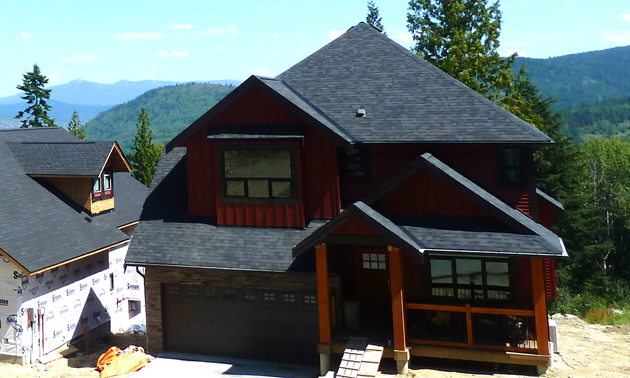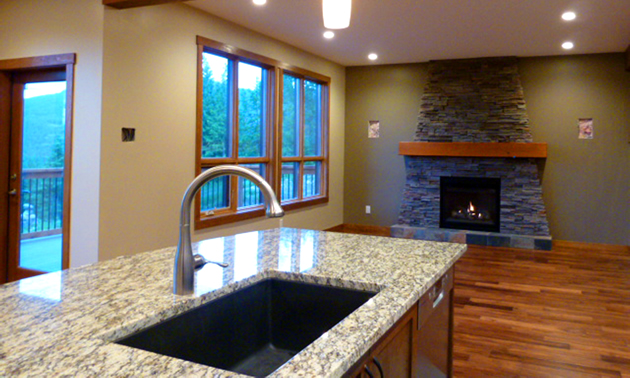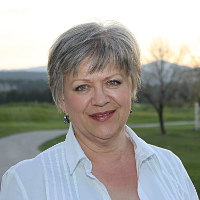Building greener homes
Sometimes our finances overrule our preferences
To paraphrase an old saying, if wishes were Porsches, beggars would drive. This story isn’t about cars, it’s about houses, but you get the idea. Many of us do our best to protect our ecological environment even when it’s not very convenient; in many situations, though, our decisions are based on our finances.
As much as possible, brothers Rob and Dean Bulfone, property developers in the Rossland/Trail area, are incorporating energy-efficient systems and materials in their construction. They recently completed their first EnerGuide 80 house, built to the specifications of the buyer. EnerGuide is a standard measure of a house’s energy efficiency, on a scale of 0 to 100. The rating is valuable to the buyer of the house because it indicates the amount of energy that they will have to purchase on an ongoing basis. A rating of 80 or higher is excellent.
Evergreen Ridge, a subdivision in Rossland, B.C., is the Bulfones’ development. A number of families, most of whom have school-age children, are already in residence there. The homes that the brothers build are constructed with an eye to maximizing efficiency and minimizing cost for the buyers. Entry-level cost is $340,000 to $350,000.
The impact of the economy
“When we started the project,” said Dean, “there was a lot of interest in the EnerGuide 80 houses, but as the market tightened we have seen a decrease in interest. People have become more budget-conscious since 2008.”
In these tough economic times, the brothers sympathize with prospective homebuyers who, because of financial constraints, have to compromise their wishes for a “green” home.
“There’s definitely interest—everyone talks the talk about green homes,” Dean said with a rueful little laugh, “but when it comes to paying the cost, we’ve had a challenge. We understand that it’s a struggle for everyone right now, so we just scale down a bit and work a little harder.”
At $430,000, the basic cost of the newly completed EnerGuide 80 house at Evergreen Ridge placed it well beyond the average price of the homes in the development. Because of the upgrades that the owners chose to add, the finished cost was considerably higher.
What it takes
The construction components that were used to meet high EnerGuide standards are a credit to innovative minds. There is tankless, on-demand hot water, which eliminates the heating and storing of large amounts of water; there is a drain-water heat-recovery system that reuses heated waste water to warm incoming cold water; and there is an air-source heat pump, which extracts and stores heat from the air and uses it to heat or cool the interior environment—the payback period for this particular system is just seven to 10 years. High-efficiency appliances, specialized windows and doors, and spray foam insulation are a few more of the components of a highly energy-efficient house.
Over a decade ago, Rob was licensed as an R-2000 builder—this is the rating system that preceded EnerGuide for energy-efficient homes, and it focused on the insulation and air tightness of homes. Utilizing R-2000 technology is an option for all Evergreen clients, to optimize the energy efficiency of their homes at an affordable cost of only around $1,200.
“The key is attracting the right people,” said Dean, “people who understand the long-term value of an energy-efficient home and are willing to pay for it. We are grateful to those few who are leaders in this area and have enabled us to build the first EnerGuide 80 house for a client in the Rossland/Trail area.”








Comments